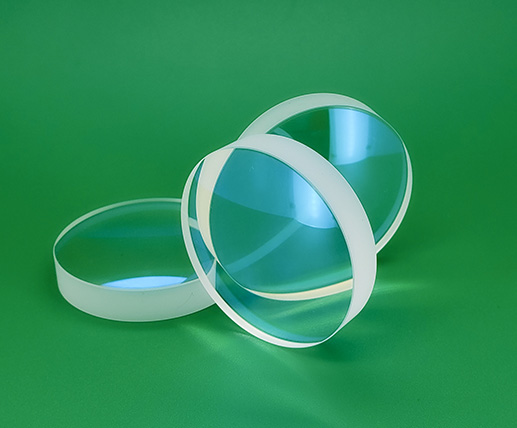Advantages and Applications of Plano-Concave Lenses
Welcome to the realm of optics where the significance of plano-concave lens is paramount. In this comprehensive guide, we delve into the intricate workings, applications, and advantages of these lenses, illuminating their pivotal role in various industries. Let's embark on a journey to understand how plano-concave lenses contribute to shaping our visual landscape.

Unveiling the Basics:
Plano-concave lenses as the name suggests, feature one flat surface and one concave surface. This unique design distinguishes them from other optical elements, offering distinct advantages in light manipulation and image formation.
Understanding the Structure:
Plano-concave lenses boast a simple yet effective structure. With one side curved inward and the other side flat, they alter the direction of light rays passing through them. This alteration facilitates the formation of virtual images and aids in correcting aberrations in optical systems.
Applications of Plano-Concave Lenses:
Plano-concave lenses find extensive utility across various domains, owing to their versatile optical properties and precise light control capabilities.
Optical Instruments:
In the realm of optical instruments, plano-concave lenses serve diverse functions, from beam expansion to light collimation. They are integral components in telescopes, microscopes, and cameras, enhancing image quality and enabling precise visualization.
Laser Technology:
The role of plano-concave lenses in laser technology is indispensable. By diverging laser beams, these lenses facilitate efficient light manipulation, enabling applications in laser cutting, engraving, and medical procedures such as laser eye surgery.
Photography and Imaging:
Photography enthusiasts and professionals alike benefit from the use of plano-concave lenses in camera systems. These lenses contribute to achieving desired focal lengths, controlling depth of field, and minimizing distortions, resulting in crisp and clear images.
Related links:What Are Seismic Sensors?
What Is Jacketed Glass Reactor ?
Mastering the Art of Utilizing a Thrust Stand for Precise Measurements
Understanding the Power of Cylindrical Lenses and Spherical Lenses in Optics
The Evolution of Digital DC Millivoltmeters: From Analog to Precision
Why Choose UV Grade Fused Silica Plano-Convex Lenses?
High Voltage Testing
Scientific Research:
In scientific research, plano-concave lenses play a vital role in experimental setups, optical benches, and spectroscopy instruments. Their precise light control capabilities enable researchers to conduct accurate measurements and observations across various disciplines.
Advantages of Plano-Concave Lenses:
Plano-concave lenses offer a plethora of advantages, making them indispensable in optical systems and devices.
Aberration Correction:
One significant advantage of plano-concave lenses is their ability to correct optical aberrations. By manipulating the path of light rays, these lenses mitigate distortions and ensure accurate image formation.
Light Divergence:
The diverging nature of plano-concave lenses allows for efficient dispersion of light, enabling applications such as beam expansion and collimation. This property is particularly advantageous in laser systems and scientific experiments requiring precise light control.
Cost-Effective Solutions:
Compared to complex optical components, plano-concave lenses offer a cost-effective solution for achieving desired optical effects. Their simple yet effective design makes them accessible to a wide range of industries and applications.
Conclusion
In conclusion, plano-concave lenses stand as pillars of modern optics, facilitating light manipulation, image formation, and aberration correction across various industries. Their simple yet effective design, coupled with versatile applications, underscores their significance in optical systems and devices. As technology advances and new challenges emerge, the enduring utility of plano-concave lenses continues to shape the landscape of optics, driving innovation and discovery.



